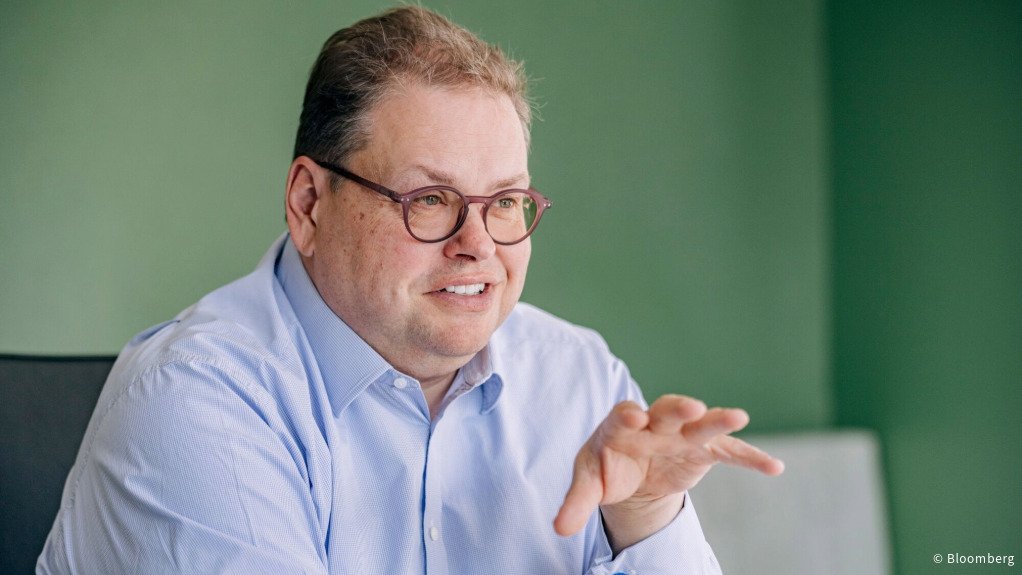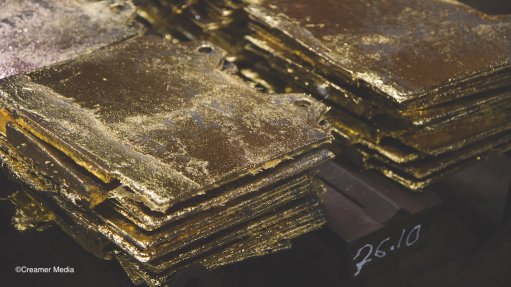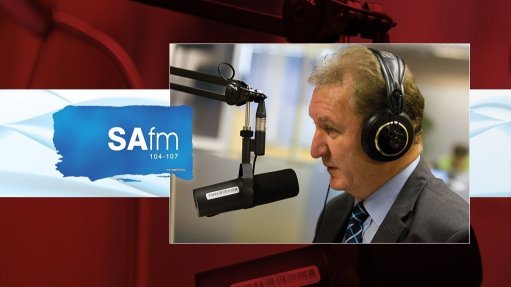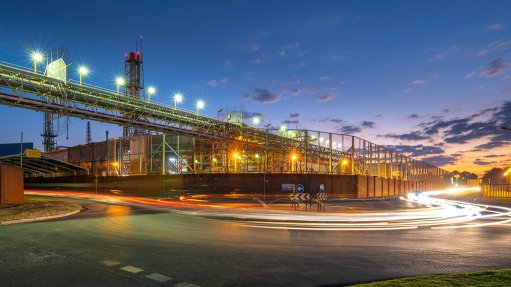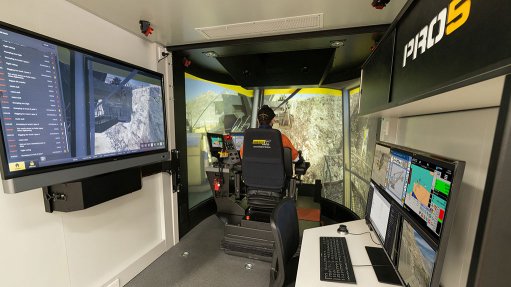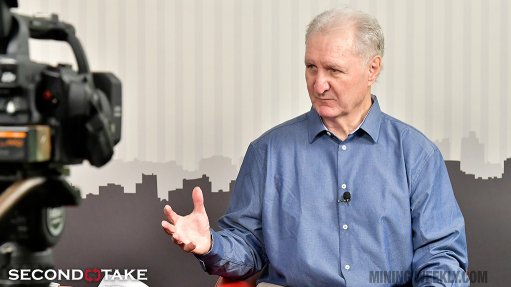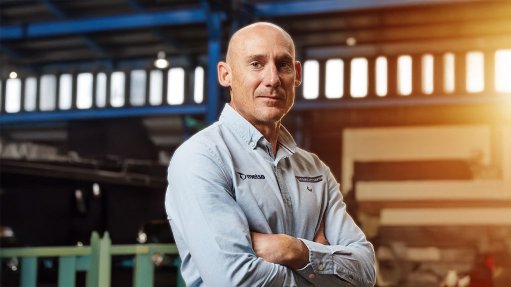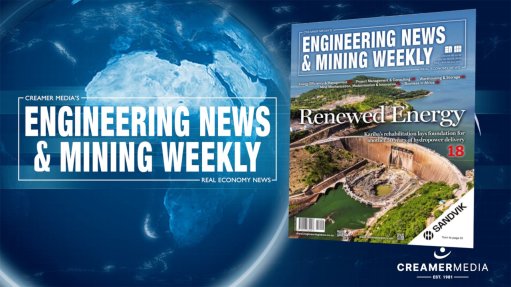Mining’s king of private capital says governments must intervene
Oskar Lewnowski has a good claim to be the poster boy for private capital in mining.
A former investment banker who quit the legendary London-based commodity hedge fund Red Kite to start out on his own a decade ago, Lewnowski’s company Orion Resource Partners is now the biggest specialist investor in metals and mining, focused on private equity and private credit.
And yet he’s calling for governments to intervene. A lack of adequate investment in mines means the world is barreling toward a crisis in metals supply comparable to the oil shocks of the 1970s, Lewnowski says. Part of the answer, he argues, would be for states to step in and build strategic mineral stockpiles.
“It's an extremely big problem,” he said in an interview. “The government needs to certainly be more involved.”
Lewnowski’s comments encapsulate a core paradox facing the mining industry: the sector has suddenly become a top strategic priority, as Europe and the US worry about their future supplies of minerals critical to everything from power and communications infrastructure to defense. And yet the reality of constructing and financing new mines is as tough as it’s ever been, with prices for key metals including nickel and lithium under pressure amid a wave of new supply from Chinese-backed projects.
Lewnowski is not the only counterintuitive source of calls for government intervention in metals. Last week, the chief executive of Trafigura Group said at a conference in Switzerland that western governments should take ownership of struggling smelting assets, including those belonging to his company, to ensure national security.
The comments were jarring coming from one of the biggest players in commodity trading — another sector that’s normally a flag-carrier for free-market capitalism.
“When the oil embargoes started happening and prices started to spike in the fossil fuels, the US created a strategic petroleum reserve,” Lewnowski said. “Something like that will need to happen.”
‘BRUTAL’ LESSON
To understand why Lewnowski is calling on governments to get involved, it’s instructive to look at Orion’s most recent flop.
In 2021, the fund joined forces with Glencore and Egyptian billionaire Naguib Sawiris to back UK-listed Horizonte Minerals to develop a nickel project in Brazil.
The timing seemed good: nickel’s demand was growing rapidly thanks to its use in batteries for electric vehicles, and auto industry executives were worrying about future shortages. Four years later, though, Horizonte has fallen into administration after spending hundreds of millions of dollars on a project that may never be completed. Orion faces significant losses on its investment of about $150-million.
It is an object lesson in how a demand boom doesn’t necessarily make for a good investment: Horizonte lost the faith of its investors when it revealed its construction costs would be nearly double what it had forecast. But the killer blow for the project was the nickel market, where Chinese investment in Indonesia has unleashed a tidal wave of supply.
“It has been brutal,” Lewnowski said. Chinese producers “have driven up supply to a point where prices have collapsed. And it has put a lot of pressure on competitors.”
It’s a trend that governments around the world are gradually waking up to. As Donald Trump rails on the global stage for access to mineral deposits from Ukraine to Greenland, the reality is that China is increasingly dominant. The country processes a vast percentage of everything from copper to gallium, while Chinese mining companies also account for a growing share of total mining investment.
Meanwhile, European banks that traditionally financed mining projects have gradually retreated from the sector and public equity investors have soured on miners — putting an increasing focus on private capital and prompting governments seeking to counter Chinese dominance to put in a call to Lewnowski.
“They're asking us essentially questions like how big a problem is this?” he said. “How can we catch up to the Chinese on something that they've done for 10 years now?”
For Orion, that’s good business. The firm counts sovereign wealth funds among its investors, and just unveiled a $1.2-billion partnership with Abu Dhabi’s ADQ. With its base in New York, it is well positioned to be part of groups seeking to counter Chinese dominance in mineral-rich regions of the world.
GALLOWS HUMOR
Lewnowski founded Orion in 2013 after leaving Red Kite and his partnership with two of the most famous names in metals trading: Michael Farmer and David Lilley. Originally created to focus on mine financing, Orion now has about $8-billion in assets under management and a business that spans private equity, venture capital and commodity trading.
Investing in mining requires a certain kind of personality, combining boosterish optimism with gallows humor born of regular disappointment – and the 59-year-old son of a fund manager embodies the archetype. At one moment, Lewnowski is predicting never-before-seen copper prices of over $13 000 a ton; the next he is reflecting on his career by echoing Mike Tyson: “You always have a plan until you get punched in the mouth.”
Lewnowski won’t comment on the performance of his funds, but says Orion’s investors have enjoyed solid returns, with less volatility than they’d face in the public markets. A recent investor presentation cited average internal returns since inception of 16.1% before fees for its mine finance funds, according to a person familiar with the document. Recent quarterly reports from investors in some of its more mature funds show they’ve received internal rates of return of about 8% to 9% after fees.
Red Kite was one of the main winners of the commodity supercycle in the early 2000s, notching up eye-watering returns of as much as 188% in a year, as Farmer and Lilley’s contacts in China helped them see that a massive bull market in copper was coming. But while Farmer and Lilley were focused on metals trading and willing to stomach hugely volatile returns, Lewnowski wanted to focus “on the mine-building side of things,” he says.
When they parted ways in 2013, Lewnowski took Red Kite’s most recent mine finance fund and used it to form the basis of his new business.
Orion aimed to focus on the actual building of mines, capturing a 2.5 times uplift in valuation as a project goes from construction through to production, according to a company presentation.
Over time it has added other funds. A hedge fund that aims to trade metals markets as Red Kite did, but without the stomach-churning volatility, rose to become one of the largest commodities funds before suffering investor redemptions and a down year in 2023. As of early 2025, its assets were just $580-million, down from $1.6-billion at the peak, according to an industry report. Lewnowski declined to comment on the figures, but said it suffered from taking too much capital too quickly from the wrong investors, and that it is now growing again.
‘THEY DON’T PANIC’
While Horizonte was a punch in the mouth, other deals have been more successful. In 2015, Orion struck a deal to buy two Chilean copper mines from Anglo American for $300-million in partnership with John MacKenzie, Anglo’s former head of copper. They converted the ageing assets, which had been exploiting oxide deposits, to mine for sulphides – effectively, building a whole new mine – and slashed costs.
A decade on, with copper prices nearly double where they were when the deal was agreed, Orion has made several times its original investment. It sold a silver stream on the mines as part of a broader $835-million deal with Osisko Gold Royalties in 2017, before taking the assets public through a merger with Capstone Mining in 2022. Starting in 2023, it has made nearly $700-million by selling down its shares in the combined entity, Capstone Copper, and still has a stake worth about $470-million.
MacKenzie said that big, generalist private equity funds “haven’t been able to get their heads around” the cyclical and long-term nature of mining investments. That has left Orion and a clutch of other specialist, mining-focused funds that includes the likes of Appian Capital Advisory and Resource Capital Funds as key financiers of the industry.
Still, even for the specialists there are some hair-raising moments. MacKenzie recalls that two of the three funds he had lined up to back the Anglo deal dropped out at the last minute, leaving Orion on the hook for the whole thing. “Even when times are tough, they don’t panic,” he said of Lewnowski and his team.
NATIONAL SECURITY
Apocalyptic predictions about future shortages of metals have become a common refrain in recent years, as bullish investors and mine builders argue that supply will struggle to keep pace with demand for all the batteries, solar panels and high-voltage cables needed for the transition from fossil fuels. Building a mine is harder than ever, as the best deposits have already been exploited, costs have spiralled higher, and permits are hard to get.
Still, the predictions have yet to be proven right, as economic malaise in China, slower-than-expected uptake of electric vehicles, and the waves of new production from Chinese-backed mines have kept shortages at bay.
The result is a paradoxical situation where prices for many metals are relatively low, yet governments outside of China are fretting about security of supply. That’s why Lewnowski is arguing in favor of government stockpiles.
It’s an idea with a long history. The US stockpiled metals critical to its defense industry for decades in the wake of the Second World War, but sold off the large majority of its holdings after the end of the Cold War. In energy, the creation of national stockpiles like the SPR in the aftermath of the oil crises of the 1970s has been credited with mitigating price spikes.
In recent years, the idea of stockpiling critical metals has been gaining traction in some corners. It’s “not going to happen overnight,” Lewnowski said. “But that's something that the governments need to do.”
Of all countries, however, it’s China that is the most active government stockpiler of metals, regularly buying thousands of tons for its state reserves. That is perhaps ironic, because metals processing is the area where China is most dominant, accounting for more than half of global copper, zinc and aluminum processing and an even higher share of more niche metals like cobalt, lithium and rare earths. Richard Holtum, Trafigura’s CEO, said last week that the west risked outsourcing its smelting industry to China.
“Smelting capacity is a national security issue, and therefore needs to probably have some sort of government ownership or significant government support for it because it is not competitive on an international basis comparing it to the Chinese,” Holtum said, announcing a strategic review of Trafigura’s loss-making Australian lead and zinc smelters.
Lewnowski acknowledges that the mining sector as a whole has disappointed investors.
But he points to forecasts from the International Energy Agency that the world needs to spend more than $300-billion building copper mines by 2040 to ensure enough supply of the metal for all the electrical cables and wiring needed for the transition away from fossil fuels.
It’s not clear where that money will come from, and copper prices will need to rise to $13 000 to $14 000 a ton from the current level of roughly $9700, to incentivize sufficient investment, Lewnowski says. He also sees future “challenges” for tin, uranium, lithium and cobalt.
“You need that price to incentivize certain kinds of new production” Lewnowski said. “But until you have that price, you can’t invest on the basis of a hypothetical.”
Article Enquiry
Email Article
Save Article
To advertise email advertising@creamermedia.co.za or click here
Announcements
What's On
Subscribe to improve your user experience...
Option 1 (equivalent of R125 a month):
Receive a weekly copy of Creamer Media's Engineering News & Mining Weekly magazine
(print copy for those in South Africa and e-magazine for those outside of South Africa)
Receive daily email newsletters
Access to full search results
Access archive of magazine back copies
Access to Projects in Progress
Access to ONE Research Report of your choice in PDF format
Option 2 (equivalent of R375 a month):
All benefits from Option 1
PLUS
Access to Creamer Media's Research Channel Africa for ALL Research Reports, in PDF format, on various industrial and mining sectors
including Electricity; Water; Energy Transition; Hydrogen; Roads, Rail and Ports; Coal; Gold; Platinum; Battery Metals; etc.
Already a subscriber?
Forgotten your password?
Receive weekly copy of Creamer Media's Engineering News & Mining Weekly magazine (print copy for those in South Africa and e-magazine for those outside of South Africa)
➕
Recieve daily email newsletters
➕
Access to full search results
➕
Access archive of magazine back copies
➕
Access to Projects in Progress
➕
Access to ONE Research Report of your choice in PDF format
RESEARCH CHANNEL AFRICA
R4500 (equivalent of R375 a month)
SUBSCRIBEAll benefits from Option 1
➕
Access to Creamer Media's Research Channel Africa for ALL Research Reports on various industrial and mining sectors, in PDF format, including on:
Electricity
➕
Water
➕
Energy Transition
➕
Hydrogen
➕
Roads, Rail and Ports
➕
Coal
➕
Gold
➕
Platinum
➕
Battery Metals
➕
etc.
Receive all benefits from Option 1 or Option 2 delivered to numerous people at your company
➕
Multiple User names and Passwords for simultaneous log-ins
➕
Intranet integration access to all in your organisation



